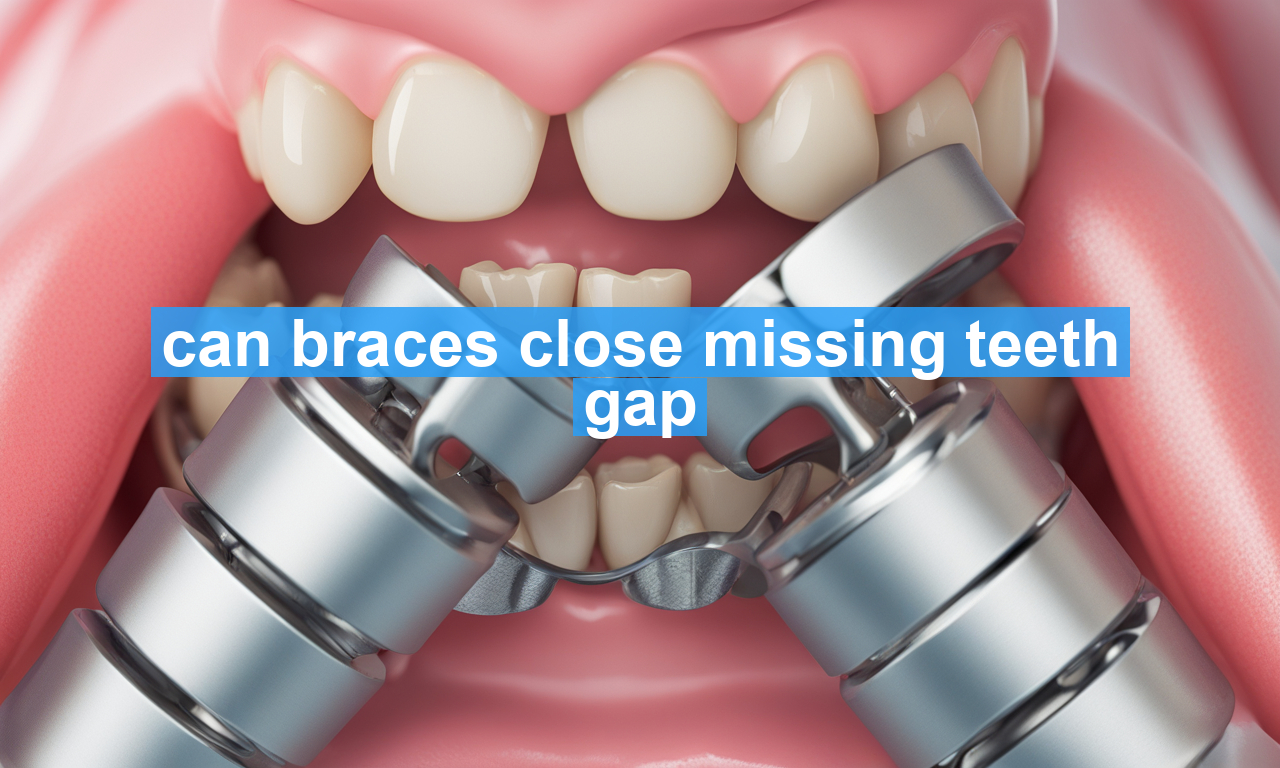If you’ve ever wondered if braces could help with gaps from missing teeth, you’re not alone. This question frequently arises for those seeking that perfect smile or a more functional bite. While braces have been the quintessential approach to straightening teeth, they also play a significant role in addressing spaces left by missing teeth. Whether the gap results from dental trauma, congenital absence, or an extraction, braces can indeed be a part of the solution—yet the answer isn’t one-size-fits-all. In this article, we’ll delve into whether braces can truly close gaps left by missing teeth, the potential benefits, and alternatives you might consider for a cohesive dental plan.
Understanding Missing Teeth Gaps
Gaps from missing teeth can impact not just the esthetics of your smile but also its functionality. These spaces can alter your bite and even lead to long-term oral health issues. When a tooth is missing, surrounding teeth might drift into the empty space, causing misalignment. This misalignment can lead to bite issues, increased wear and tear on the remaining teeth, and difficulty in maintaining hygiene. It’s important to realize that addressing the gap left by a missing tooth isn’t just about appearances—it’s essential for your overall oral health.
Can Braces Really Close Gaps Left by Missing Teeth?
The answer is both simple and complex. Yes, braces can close gaps, but it greatly depends on the location and reason behind the gap, as well as the overall condition of your oral health. Here’s a breakdown:
– **Gaps Due to Missing Teeth**: Braces can indeed move adjacent teeth into the gap. However, this is typically only a viable solution when teeth are missing at the back of the mouth and there’s a desire to rearrange the remaining teeth to suit a more functional or aesthetic arrangement.
– **Orthodontic Planning**: An experienced orthodontist will consider whether closing a gap is in the best interest of your oral health. Sometimes, closing gaps may require the use of orthopedic appliances alongside braces to stabilize the result.
– **Cosmetic and Health Considerations**: The decision might also depend on how closing a gap might affect your profile or bite. For instance, closing gaps in the front might alter the appearance of your smile unless planned carefully.
Alternatives to Braces for Closing Gaps
If braces don’t suit your needs or desires, there are other dental interventions to consider:
– **Dental Implants**: For many, a dental implant is a more practical and lasting solution for closing a toothless gap. Implants involve a titanium post placed into the jawbone, over which a tooth crown is placed. They mimic natural teeth in both function and appearance. If you’re considering this option, it would be valuable to read up on dental implants from credible sources like WebMD.
– **Bridges**: In cases where implants aren’t feasible, bridges can serve as an alternative. This option literally bridges the gap by placing crowns on the adjacent teeth with a false tooth in between.
– **Veneers and Bonding**: For smaller gaps, cosmetic solutions like veneers or dental bonding might suffice. These options can seamlessly close minor gaps without altering the natural alignment significantly.
What to Consider Before Opting for Braces to Close Gaps
If you’re leaning towards braces as your gap-closing solution, here are a few things to ponder:
– **Treatment Duration**: Braces require a considerable time commitment. You may need to wear them for months or even a few years, depending on the individual case.
– **Expense**: Orthodontic treatment is a financial investment. Check with your dental insurance to see if it covers orthodontic appliances and consider talking to your orthodontist about payment plans if needed.
– **Oral Hygiene**: Maintaining excellent dental hygiene is crucial while in braces to prevent tooth decay and gum disease.
– **Follow-Up Care**: Post-treatment retainers are usually necessary to prevent teeth from shifting back to their original position.
Consulting with a Professional
The decision to use braces, implants, bridges, or any other dental solution should always be made in consultation with a certified dental professional. A customized treatment plan that considers your unique dental structure and health goals is essential to ensuring lasting results. Seeking an in-depth discussion with your orthodontist or dentist is vital. For more trustworthy health information, consider visiting extensive resources such as the Mayo Clinic.
Final Thoughts
The quest for a perfect, healthy smile doesn’t necessarily end with the appearance of your teeth. It’s about making informed decisions on how to address missing teeth gaps comprehensively, whether with braces or other options. Remember, each approach has its own merits and challenges, and the right choice varies from one person to another.
Take your time to gather adequate information and consult with dental professionals to come up with the best plan that aligns with both your aesthetic desires and health needs. Your perfect smile is a journey—embrace each step with informed diligence and optimism!

